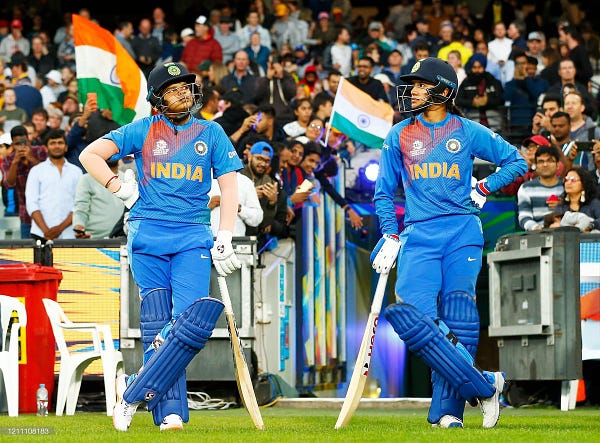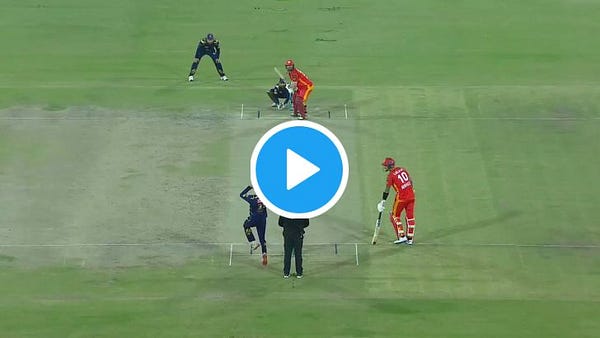In Numbers: Ireland's Dependence on Stirling and Balbirnie
The duo have scored 43% of Ireland's runs off the bat since Ed Joyce retired
It’s a series they never should have lost. The Netherlands were missing their three best middle order batters, Josh Little and Craig Young were bowling better than they ever have, Paul Stirling topped the run charts in yet another series, and he was ably supported at the crease by...
**Checks notes**
Oh never mind.
Okay. That was a little harsh given Andrew Balbirnie’s consistency over the years. But make no mistake: Ireland’s batting is in crisis.
We already know that they’ve been far too reliant on Stirling and Balbirnie for far too long. Yet, a closer look into Ireland’s batting over the years reveals the true scale of the problem. Hint: It could be even worse than you think.
How good have Stirling and Balbirnie been?
Let’s begin by taking a look at how consistent Balbirnie and Stirling have been in the last few years.
Since the start of 2017, Stirling has averaged 47.83 in 57 games as an opener, which puts him amongst the top 10 openers in the world. His strike rate of 83.13 in that period is a reflection of how he’s changed his game to deliver more consistently for a batting line-up that desperately needs some stability. These numbers also stand in stark contrast to his returns in 71 games between his debut and the end of 2016, where he averaged 32.94 and struck at 92.37.
Remarkably, he hasn’t lost his explosiveness in T20Is. In fact, he’s become even more consistent and more dangerous. Before 2017, he averaged 23.5 in the format, striking at 128.2. The corresponding numbers since the start of 2017 are 35.2 and 146.2. He’s struck at 140 in four consecutive calendar years from 2017 to 2020; something he’s done only once before in 2013 when he played just two matches.
Balbirnie has taken longer than his compatriot to mature into a reliable ODI batter. In his first 37 matches before the start of 2018, he averaged a modest 23.65 scoring at just a shade over four runs an over. However, in 41 games since 2018, he’s averaged 38.02 at a strike rate of 77.6, scoring all six of his ODI centuries in this period.
Since the retirement of Ed Joyce
The problems for Irish batting really started to surface after the retirement of Irish legend Ed Joyce, who averaged in excess of 40 in his 61 games for the men in green.
Since Joyce retired from all forms of cricket, Stirling alone has contributed 25.1% of Ireland’s runs off the bat. That’s the highest percentage of runs scored off the bat by any ODI team’s top batter in that time period.
Ireland’s top two run-scorers Balbirnie and Stirling have combined to score 43% of Ireland’s runs off the bat in that time period. Once again, that’s the highest figure for any ODI team’s top two batters, and by some distance too with India’s Rohit Sharma and Virat Kohli next in line with 37.5% of their team’s runs off the bat.
Unsurprisingly, Ireland’s batting run rate of 4.61 since Joyce’s retirement is the second-lowest among teams participating in the Super League. The Netherlands with an RPO of 4.21 are the only team with a worse batting run rate than Ireland, and as we alluded to earlier, the absence of three of their best batters in the Ireland series is a valid excuse for this number.
This shows up in the results too. Ireland’s win-loss ratio since Joyce’s retirement stands at 0.5, which is, once again, the second-worst amongst Super League teams in the same period.
Now, to further rub salt into the wound, Ireland have only won two games out of 30 in which both Stirling and Balirnie have failed to cross 50. That’s a win percentage of 6.7%.
When only one of them reaches a 50+ score, they still only win three out of every eleven games, which translates to 27.3%. This figure begins to look even worse when you consider that those two victories have come against Zimbabwe and a severely depleted UAE squad in transition after a string of anti-corruption scandals.
Outlook against South Africa
Unlike their previous two Super League series against Afghanistan and the Netherlands, there is a very real concern that Ireland may concede all 30 points to their opposition. With the Proteas’ pace trio of Rabada, Nortje, and Ngidi supported by Tabraiz Shamsi — who is in the form of his life — an already brittle Irish batting line-up will arguably have to contend with its biggest test in years in the ODI format.


Surprisingly, Ireland have continued to persist with William Porterfield over the years in spite of the fact that he’s averaged a shade over 19 in 21 innings since the retirement of Joyce. That he’s been given a long rope when the likes of Gareth Delany, Stephen Doheny, and Neil Rock have been cooling their heels is perhaps Irish cricket’s most bizarre self-inflicted wound.
On the bright side, Curtis Campher, who has crossed fifty thrice in his first seven ODIs, is making a comeback after recovering from an ankle surgery that ruled him out of the Netherlands ODIs. Harry Tector, earmarked as a future Irish captain, also scored a composed half-century in the third ODI against the Netherlands.
However, in order to get out of the series with at least one win, Ireland will need more than just a contribution here and a half-century there. They need someone other than Balbirnie or Stirling to score big. As Ireland approaches the halfway stage of their Super League campaign, just who that person might be, is still not entirely clear.
Header Image: Cricket Ireland Twitter
Chart #1 and #4 Courtesy ESPNCricinfo
—————
We hope you’ve enjoyed this piece. If you’re a fan of a more global and gender-inclusive sport, please do sign up for this e-mailer, and if you’d like to, share this piece too.
Your interaction will help us grow especially with newer readers, so leave a comment. We appreciate all responses :)
Lastly, you can find us on Twitter and Facebook









